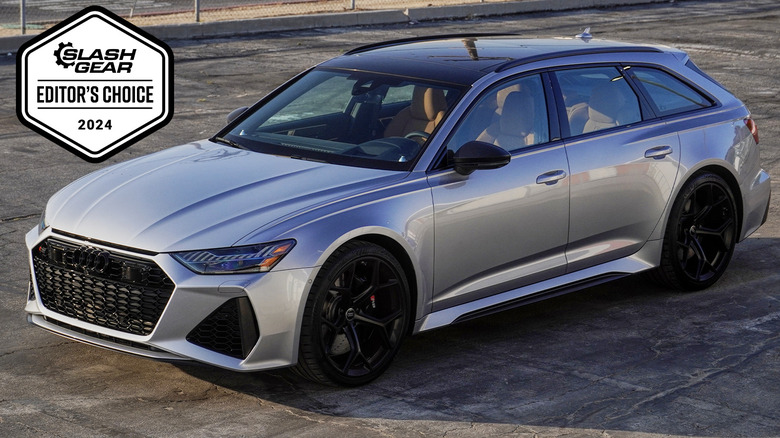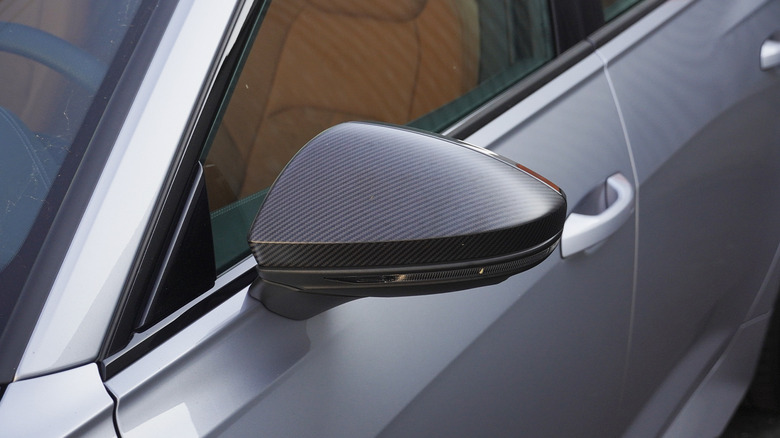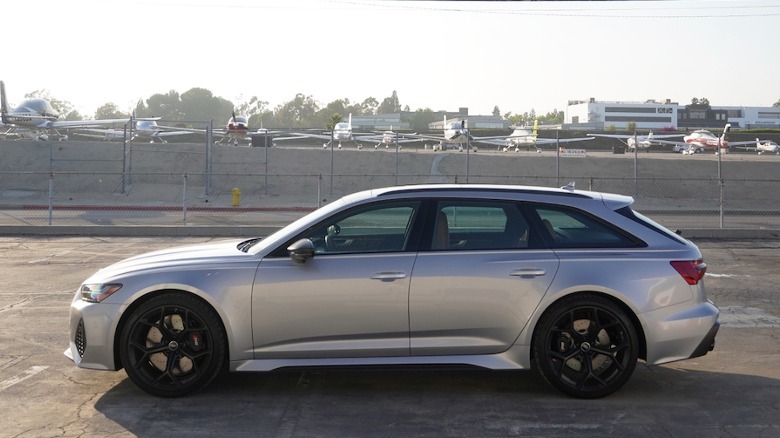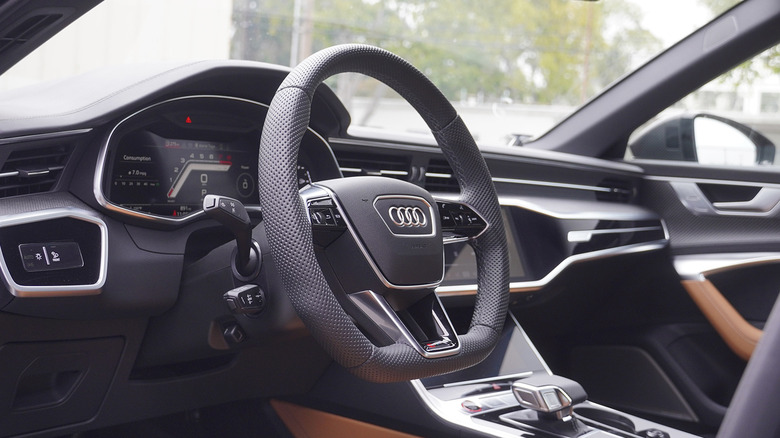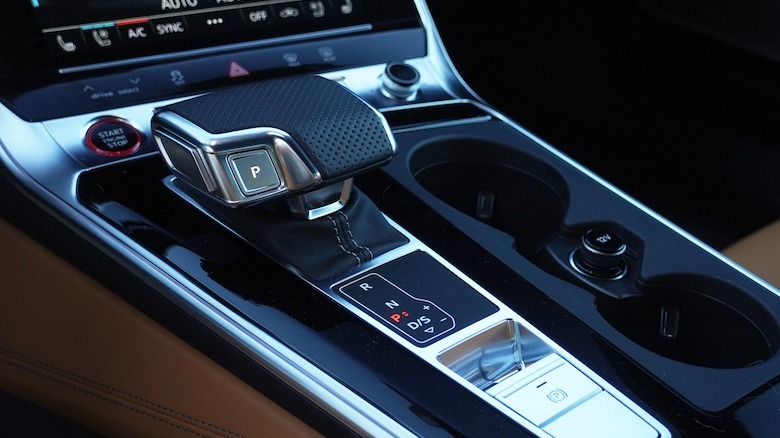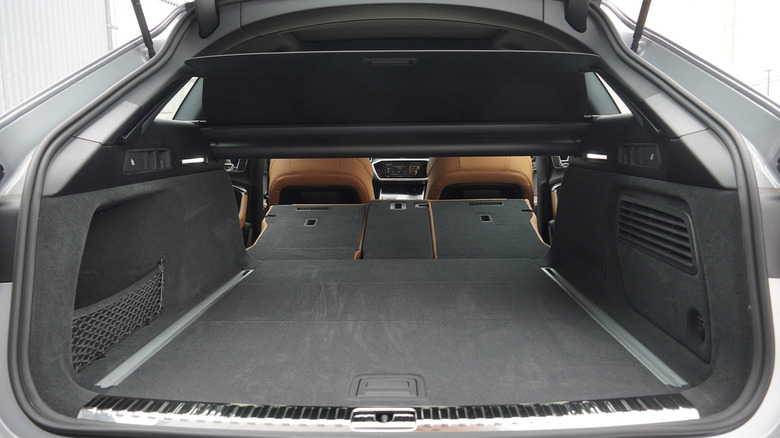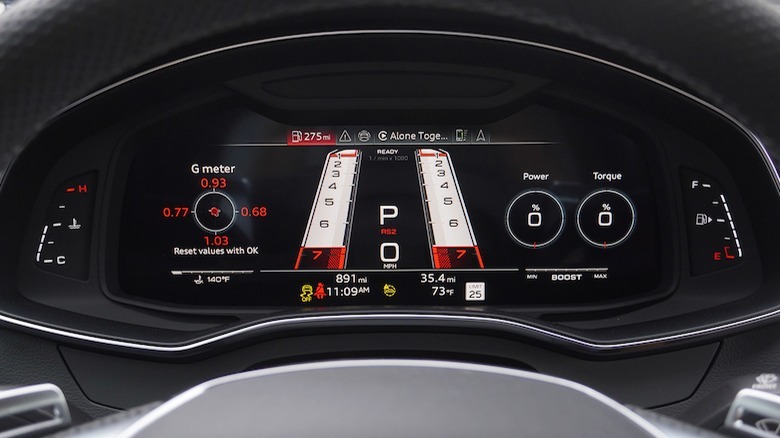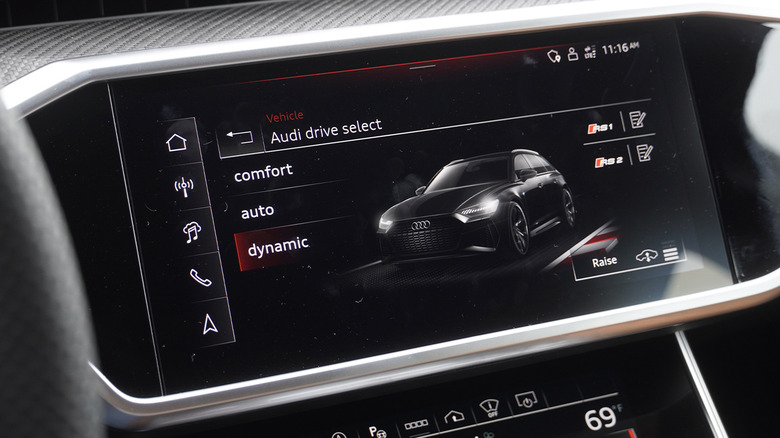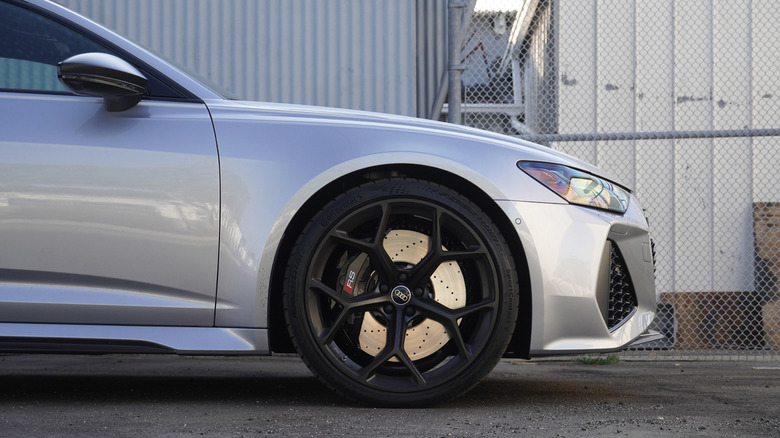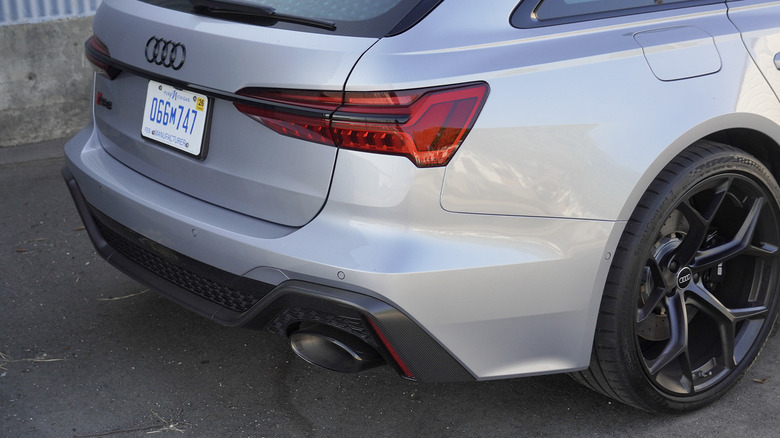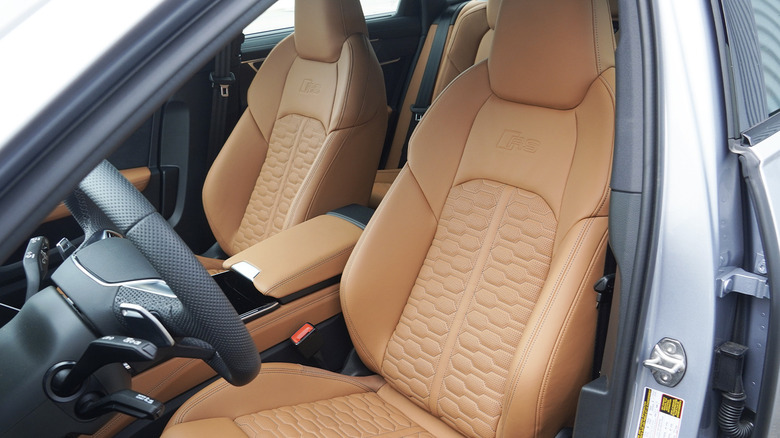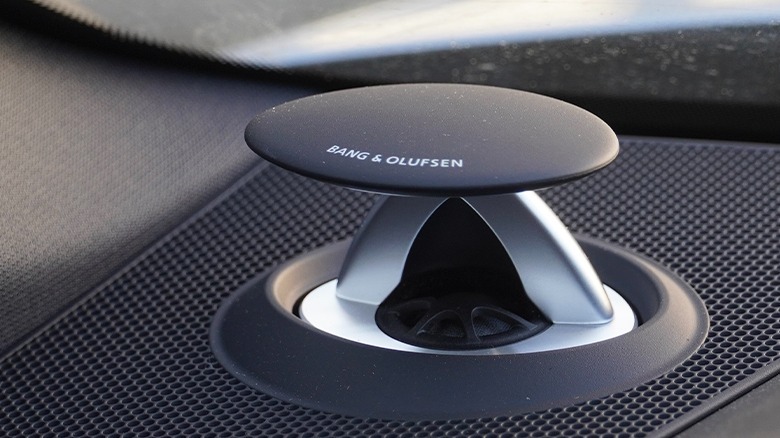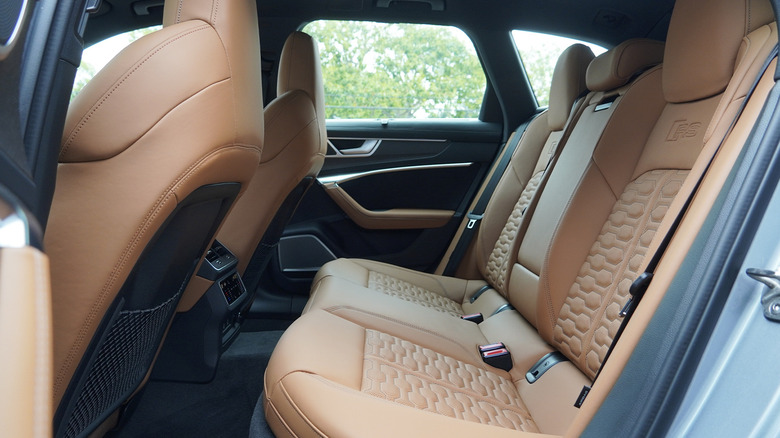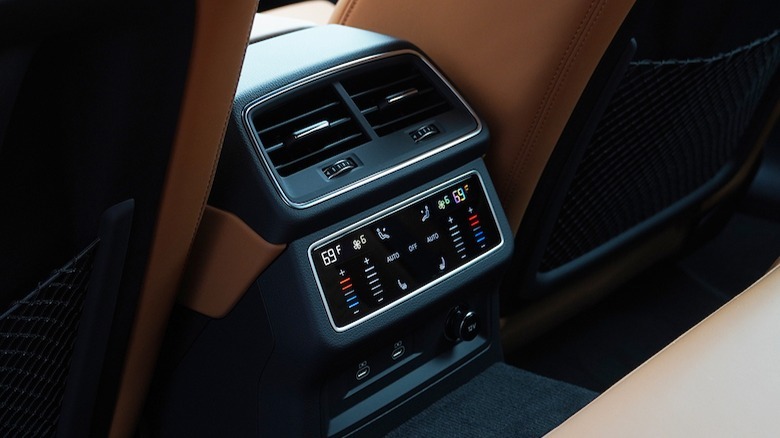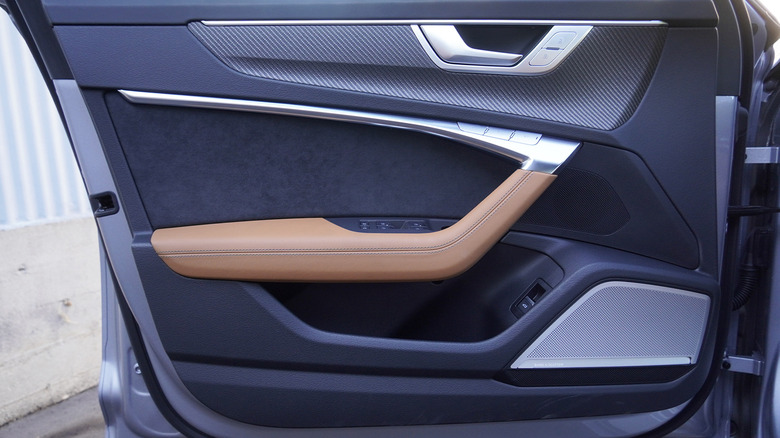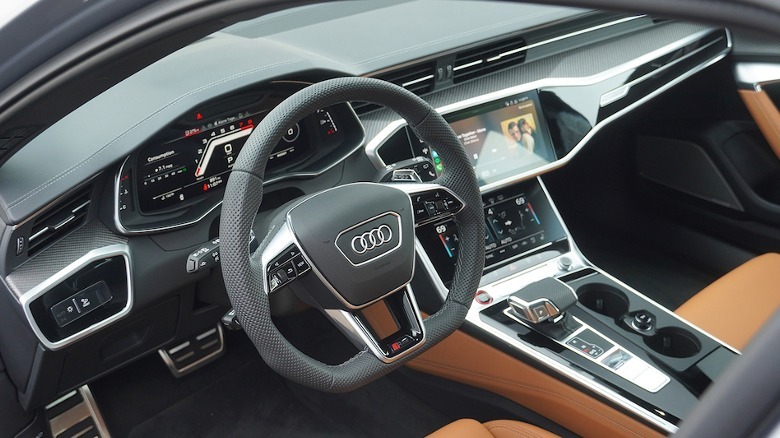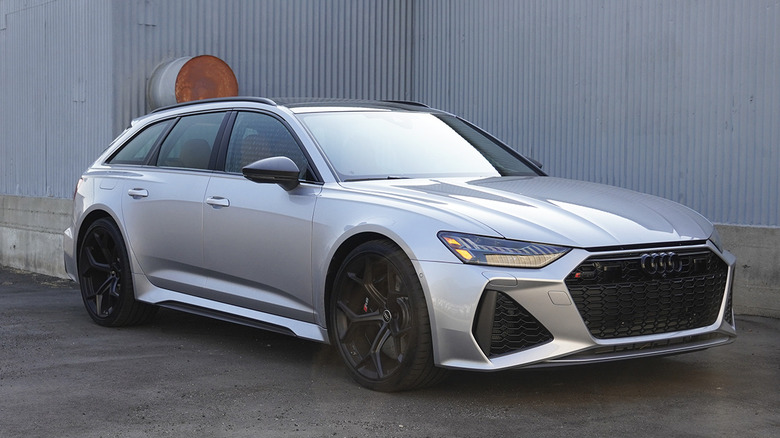2024 Audi RS 6 Avant Performance Review: The One Wagon To Win You Over
- A station wagon with aspirations of grandeur
- 621 hp and endless torque from a mild-hybrid twin-turbo V8
- Classic Audi comfort, all the carbon-fiber possible
- Possibly the greatest grand tourer ever
- You know it costs a pretty penny
- Slightly less hardcore than expected
- Actually a fairly large vehicle, in town
Everyone in the world wants to know what, exactly, is wrong with Americans. And I don't mean our dystopian politics or celebrity worship, both pushed to the brink of insanity by machinations of the modern entertainment industrial complex. More importantly, the foreign mind simply cannot comprehend why Americans hate station wagons and hatchbacks and small-displacement turbodiesel engines.
Seemingly every year, another automaker gives either hatchbacks or station wagons another go in the U.S. market. Some stick around, some seem to fizzle out and fade away, and others simply never leap out of the starting blocks. Think the Volkswagen Golf GTI, the Toyota GR Corolla, or the Ford Focus RS for hatchbacks. In terms of station wagons, only Mercedes-Benz seems to steadily keep an option in the lineup over the years.
And yet, Audi's latest efforts might—finally, possibly, hopefully—make the difference. Ever since the current RS 6 Avant crossed the proverbial pond in 2021, my curiosity matched only a certain hesitancy. Would something so burly ever end up a sales success in the US of A? Now, for 2024, Audi introduced a slightly upgraded Performance version. Excellent, sign me up, let's see what we've been missing.
A throughline to days of Audi Lang Syne
In the spirit of full disclosure, I must first admit to owning two Audis previously: a 2001 TT Quattro with the 225-horsepower turbocharged inline-four, and a 2016 A3 2.0T Quattro. The TT I bought used with 134,000 miles on the clock, in manual of course, while I bought the A3 new with the dual-clutch. I loved and hated each for their own reasons, and not just because both shared a Haldex-based all-wheel-drive system rather than the more desirable Torsen automatic torque-biasing setup made popular by early rally cars.
More specifically, the TT drove so well with a mild ECU tune and a thicker rear sway bar, but ate me out of house and home to keep on the road. The A3, to this day, drove best in snow out of any car I've ever tested, yet despite the 2.0-liter turbo-four and dual-clutch's impressive performance capability, struggled a bit on engagement front due to light steering and lack of a stick shift.
Transverse and transaxle versus longitudinal powertrains
Both mounted transverse turbocharged engines ahead of the front axle, in classic Audi fashion, and I learned soon enough that cornering required early braking and rally-style push-pulling through apex. The RS 6 Avant, though, leaves both in the dust in terms of power output from a twin-turbo V8, bolder styling on the exterior, and plentiful creature comforts on the inside. Plus, the longitudinal powertrain doesn't dictate the use of a front-wheel-biased Haldex system (or the similar in-house version used in the new RS 3, but more on that later).
This particular RS 6 Avant Performance arrived outside my apartment finished in Florett Silver over matte black wheels and a Cognac tan leather upholstery job, plus a hefty dose of bonus carbon-fiber trim inside and out. I slipped into the svelte driver's seat, surrounded by sculptural design elements and swaddled in some of the most subtly supportive bolsters ever, and pushed the button to fire up the V8.
Dreaming of the perfect road trip car
With a deep thrumble, the twin-turbo 4.0-liter mill burbled to life. The same engine shared with so many other Volkswagen AG superstars in this case puts out 621 horsepower, an uptick for 2024 versus the 2023's 591 ponies—hence the new Performance moniker. A 48-volt mild hybrid system complements the internal-combustion brute to help with low-end torque, transmission shifts, and efficiency, resulting in a total of 627 lb-ft of torque.
Just sitting there, I immediately started rueing my mileage limit. Though really more of a formal request that Audi makes for each loaner, this time 500 miles seemed like the biggest bummer given that the car itself might quite possibly be the best road-tripper ever. I made a mental note to push those Continental tires hard, in town and in the hills outside Los Angeles.
But over the course of a week, I never needed to summon any more motivation to just get out and drive than the RS 6 naturally provides. I constantly, continually kept finding myself making excuses to go for a spin, whether to the Malibu hills or Angeles Forest or just down the block to the grocery store. The driving time gave me plenty of opportunity to ponder the case for and against the station wagon in America.
A perfectly utilitarian daily driver
Clearly, the utilitarian factor comes into play. I might have mistakenly sworn that such a long trunk fits more than a Q7 or Q8, yet actually the RS 6 Avant's cargo capacity with the rear seats up comes in at 30 cubic feet, versus 35.7 and 30.5 for the Q7 and Q8 respectively. The lower roofline perhaps contributes to the lowest total volume, but also to an illusion of space given the length of the station wagon (and the numbers perhaps explain why the RS 6 skips the RS 3's trick rear diff beneath that cargo floor—then again, with a tunable sport differential and the longitudinal drivetrain, I figured in advance this car doesn't need any wizardry to counteract requisite understeer dictated by sheer physics).
I fiddled through various screens on the configurable gauge cluster, skipping over the full-screen map and sticking with the g-meter and readouts for power, torque, and boost. The varying tachometer displays based on drive mode looked familiar from my recent time with the spectacular RS 3, and meanwhile I needed to use the center screen to program the different drive settings for the individualized RS1 and RS2 selections. Obviously, I wanted Drive and Suspension and Sport set to Sport, with the Engine sound toggle set to Present to maximize the $1,000 RS sport exhaust system.
Audi drive select on the RS 6 Avant Performance
The all-wheel-drive system allows for Sport, Comfortable, and Balanced while the ESC can switch between On or Sport (or can turn totally off, maybe, via a button below the climate control). A small digital button for the ride height proved slightly more frustrating to adjust, and I never quite figured out whether the suspension just moves based on drive mode or speed or my own selection. That hesitation damped some of my daydreams even in a parked RS 6, because I love the concept of lifting the airbags up all the way during winter on knobby tires and seeing how this thing rips around in the snow, or even drives normally up to some ski slopes.
In the name of fairness, though, nerding out on settings probably doesn't fit into the average RS 6 Avant owner's plans—at least based on the average spotting I've made so far in West LA. Yet in the name of science I wanted, irregardless of my own curiosity, to hit the hills ASAP as possible to discover the sporty side of this sport wagon.
Tires and traction while canyon carving
Dry roads speckled with pebbles from distant rainstorms made for ideal Malibu conditions on an early weekend morning. Almost too good, really, because that V8 absolutely humped up the hill, gobs of torque on tap from the lowest revs to bring this 4,982-pound beast up to speed in mere moments. Yep, you read that number right—the RS 6 Avant Performance tips the scales at more than the current Lamborghini Urus. And yet, the lower center of gravity allows cornering speeds that quickly lead to dangerous pace in blind, tight canyons.
The Quattro all-wheel drive only hastened my need to start reining in such exuberances. The overall weight, but also the more balanced weight distribution, helps to mitigate some understeer chatter from the 285-millimeter-wide front tires. Keeping the Steering in Sport also provided a reasonable amount of communication, at least for a modern Audi, I suspect because of the nose weight and rubber width.
Does Audi purposefully enhance understeer?
Or maybe Audi prefers to keep a bit of nose heaviness present, if only to harken back to those original rally cars. After all, the very first RS model was the RS 2 Avant, built in concert with Porsche (ask about the Cayenne's V8) and equipped with a barking-mad inline-five that traces straight through to the current RS 3. Yet the RS 6, so large and composed and utilitarian, still bears hints of that heritage, and I felt the old undeniable urge to mat the throttle through corners and see where the push-pull of all-wheel-drive fighting physics wound up. Up higher in the rev range, the combination of V8 exhaust roar with turbo intake and blowoff raspiness resonated through the hills.
Knobby tires. If only knobby tires. Hustling through Malibu only reinforced how much I wanted to blast this car up a gravel road sideways at top speed. On smaller wheels than this RS 6's 22-inchers, of course, and with the suspension lifted. Audi declined to provide a ground clearance measurement but many outlets have reported as high as five inches—a lot lower than an RS Q8 at eight inches, but then again nobody takes either of these cars, nor an Urus, on any seriously technical off-roading trails.
Even non-car friends know
I suppose that I expected brilliance, yet I always try to keep an open mind as much as possible. One of the biggest surprises about the RS 6 Avant was how random friends, non-car people riding as passengers, seemed to share my opinion. They'd remark how nice this thing is, comment on the texture of the leather, point out the smooth ride quality. Only a few other unexpected stars have brought out these kinds of complements, including the stellar Lexus LX 600. A sense of quality, imbued in everything from seat to dash to design-y door handles, unavoidable at every turn.
One friend even noticed the nifty Bang & Olufsen speakers that pop out on start-up. Of course, they knew not that such contrivances also appear on the Urus, but the RS 6's sound system also bumps pretty good. Is it worth the $4,900 option? Because now we get into the nasty weeds, the sad sob story of this car's $149,800 price tag, up from $125,800 to start (and presumably only missing the optional carbon-ceramic brakes that unlock a 190-mph top speed).
What the pricetag pays for
That money buys the silent ride, even at highway speeds and somehow despite the 22-inch wheels and Continentals. The price tag buys a perfect place to listen to Chet Baker and relax while driving across the country and camping or attending red carpet premieres all at once. I never truly noticed the hybrid system kicking in, other than maybe smoothing out shifts, but the 48-volt battery might help with cruising fuel economy—one of the only other real knocks on such a burly V8-powered station wagon.
The silver looked great, though perhaps black rims don't quite match. And a tan interior certainly never chimes with silver quite fully; maybe a dark forest green, instead. Personally, I'd go silver or maybe even dark blue over black, and would need to have a long chat with my dealer about deleting the sunroof.
A GT for the rare hardcore station wagon enthusiast
Some reviewers might complain that the RS 6 Avant Performance lacks some sharpness, with slightly delayed shifting from the paddles and too much body roll, or the light steering and comfortable seating without excessively aggressive bolster. But I want compliance for daily comfort, I want the thin-rimmed steering wheel a la RS 3, and I doubt the DSG's snappy shifts can either handle the monstrous torque or smooth out gearshifts enough for a daily, either.
The newly announced RS 6 Avant GT may do a little more for those who crave raw edginess, but take a deep breath for pricing expected to easily eclipse $200,000. But that variant won't be a stick shift, and won't get an inline-five, and won't save all that much weight either. Only 85 out of a total 660 will ever cross the seas to the United States, perhaps revealing that Audi recognizes that only a few hardcore station wagon buyers on these shores actually want to skip out on the more luxurious appeal.
The station wagon to finally change hearts and minds
And there, exactly, hides the magic. This stately wagon can haul the refined family, yet still unleash the power and the glory when called upon. I fit with plenty of leg and headroom in the backseat with the front moved to my ideal position at 6'1" with long limbs. The rear leather even features the same hexagonal stitching as the front, so put it to use!
It's an Urus without the flashiness, an RS Q8 with a touch more class. And I handed back the keys knowing full well I might never get another go in one of my favorite testers of all time. Now, if only the RS 6 Avant Performance didn't cost $150,000 because all of a sudden, I find myself back on Craigslist trawling for used A4 and A6 wagons in manual, yet again. Thanks for the refresher, Audi, now hopefully the rest of America can take a hint.
